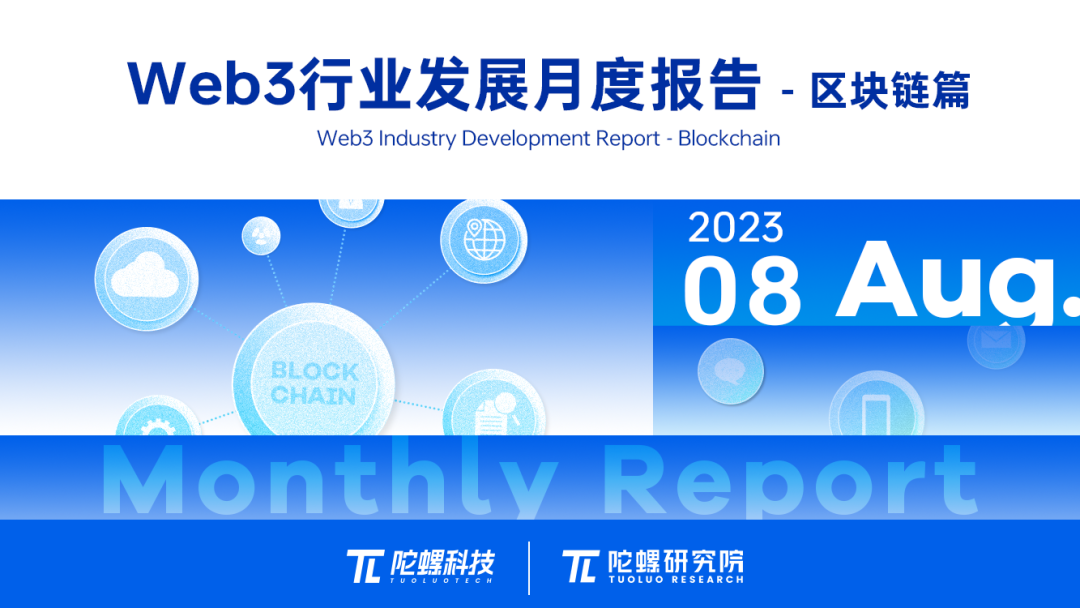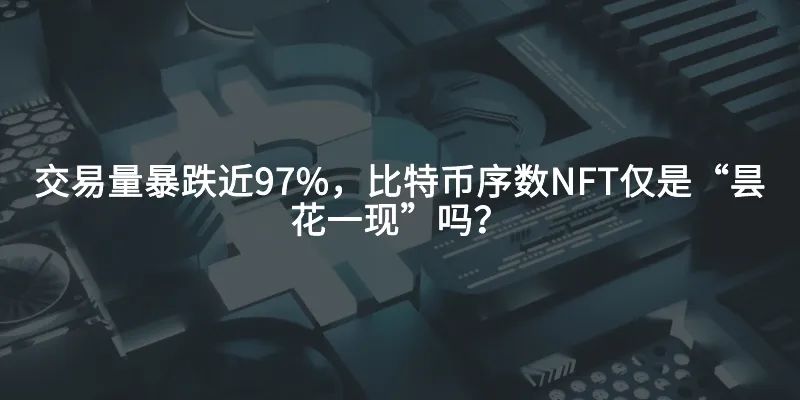
In August, the core narrative of the crypto market remained unchanged and still revolved around Bitcoin spot ETFs. Whether it was the release of stablecoins by Paypal, the largest payment institution in the United States, or Grayscale’s victory against the SEC at the end of the month, they all used this as a niche to promote a partial recovery in the market. At the end of the month, The Grayscale case once stimulated BTC to rise to $28,000. However, due to the hawkish attitude of the SEC, the issue of compliance exchanges in Bitcoin spot is also difficult to solve. The review application has been postponed again. The approval of spot ETF still needs to be considered, and the market momentum is slightly weak. Although the narrative has weakened, the dual benefits of the Federal Reserve's interest rate hike cycle at the end and the Bitcoin halving still prompted the long-term holding period of BTC to increase, and the overall liquidity recovery trend was highlighted. On the other hand, Europe passed the first Bitcoin spot ETF, but there was almost no talk in the market. This move once again reflects the core dominance of the United States in the encryption field. Returning to Hong Kong, there are many positive things happening in Hong Kong. Virtual asset platforms have opened for retail transactions, virtual banks are also actively expanding the encryption market, and there is also news that STO policies are also expected to be introduced. However, in general, core issues such as limited market and high costs have not yet been solved. To solve the problem, Hong Kong’s local encryption industry has always been full of thunder but little rain.
In terms of policy direction, two virtual asset platforms, OSL and Hashkey, have been approved by the China Securities Regulatory Commission to open retail transactions. The latter has released a trading system for retail investors on August 28, but the regulatory direction has not clarified the requirements for margins and derivatives. According to the regulatory plan, in order to avoid risks, retail investors can only invest in BTC and ETH initially, and virtual asset investment must not exceed 30% of total assets. Overall, Hong Kong's policies are undoubtedly gradually relaxing. From the chief executive to the actual implementers, everyone has revealed the benefits of the policies. However, given the small market, Hong Kong's attractiveness and industry influence are still limited. Even not only Hong Kong, but also Europe Influence in the crypto space is weak. Taking the Bitcoin ETF that attracts the most funds from traditional institutions as an example, CSOP BTC Futures ETF, the first released in Hong Kong, has mediocre performance and currently has a total management amount of approximately US$25 million. Compared with BITO, a similar product released in the United States, the total management amount is 38 times different. above. The trading volume of spot ETFs recently launched in Europe is even more dismal, with the highest daily trading volume being only 4,122 transactions, and the market impact is minimal. In contrast, in the United States, spot ETFs such as BlackRock alone are expected to push BTC from US$26,000 to US$31,000. It is self-evident what the energy of bottoming prices and the main buying power are. At its core, Hong Kong still needs to open up capital channels to push buying forces to the stage. However, judging from the current situation, this move is still full of difficulties. In addition to the mainland's differentiated policy tendencies, even the local ruling party has no control over virtual assets. there is controversy.
In terms of investment and financing, as expectations improved, investment and financing in the global blockchain market picked up in August. A total of 80 incidents occurred, with a total announced amount of 5.435 billion yuan, an increase of 1.577 billion yuan from the previous month. The average financing amount increased simultaneously, approximately was 68 million yuan, a year-on-year increase of 28.55%. The proportion of angel seed rounds has slightly decreased, but it still accounts for the main financing rounds. Among them, there were 33 seed round events and 1 angel round event. The two together accounted for 42.5% of the total number of events. Pre-A/A/A+ rounds dropped significantly this month, with only 3 cases occurring, a decrease of 7 cases compared with the previous month. Looking at the changes in this round from last year to the present, it can be seen that the number of Pre-A/A/A+ round events fluctuates around the average of 9. There were more than 10 events before October last year, and after October there were only 23 events with There were more than 10 cases in July, and this month it hit the lowest record in the past two years. From the perspective of seed rounds, angel seed rounds increased rapidly after June last year. Although there was a slight decrease in November, the average number of events still reached 39.3. The total number of events is still rapid, but the transition from the original angel seeds in the past two years has There are only a few projects coming, and the industry’s exploration at the product level is still insufficient. From the perspective of segmented tracks, the infrastructure track performed strongly, with a total financing amount of 2.471 billion yuan this month, an increase of 165.98% from the previous value, and growth for four consecutive months. The compound growth rate in April was as high as 222%. The NFT track fell into silence again after rapid growth last month, with total financing amounting to 113 million yuan, down 46.95% from the previous value, becoming the track with the largest decline this month. The closely related chain gaming field also fell simultaneously by 13 million yuan to 109 million yuan. , which is strongly related to the sluggish market performance of the two. In August, the NFT trading volume on Ethereum dropped to US$407 million, a new low since June 2021. The robust Web3 and DeFi tracks both performed mediocrely this month, with financing amounts of 1.33 and 340 million yuan respectively, down 6.86% and 39.63% respectively from July.
In the direction of digital collections, on August 9, Ant Group’s Whaletan digital collection platform adjusted the transfer time from the original 90 days to 24 hours. In February this year, Whaletan will change the first transfer time from 180 days to 90 days, changing the second transfer time from 720 days to 90 days. For compliance reasons, many major exchanges do not support secondary transactions, and mostly limit the trading frequency of digital collections in the form of transfers. This has spawned many hidden transactions in the secondary OTC trading market, and users purchase digital collections. The original intention is not artistic, but financial. This is also a fact that is kept secret by people in the industry. Whale Explorer has successively shortened the transfer time. Although the official explanation is to meet the demand for transfer, the core purpose is nothing more than the weakening of the liquidity of the collection. In short, the weakening of purchasing power. As the market is already in a downturn, the number of days for transfer has obviously restricted transactions outside the market. Previously, popular collections such as Dunhuang Feitian were once speculated to tens of thousands of yuan, but the current transaction price of some collections has shrunk by nearly 90% from the high point of speculation. . In this regard, Whale Detective has also tried to transform many times, including Metaverse land, UGC content, and physical gifts, but the effect is not obvious. The rapid decline in this transfer undoubtedly exposed its anxiety. In the long run, if it is difficult to find actual demand for digital collections and only rely on the issued trading platform, even the top players will not be able to escape the law of market elimination.
In terms of CBDC, on August 1, the new digital ruble bill signed by Putin officially came into effect, which means that the digital ruble has become the third form of currency in Russia in addition to cash and non-cash. According to the bill, the Russian Central Bank will bear all the costs for system operators. Responsibility, digital rubles are traded through a special messaging system. All transactions were free before 24 years, but starting from 25 years, B2B transactions will be charged 15 rubles ($0.16) per transaction, and individuals will pay a fee of 15 rubles ($0.16) per transaction when transferring money to a business account. 0.3%, and 0.2% of the total transaction amount when paying for public services. Similar to digital renminbi, digital wallet balances do not earn interest, but the difference is that deposits and loans cannot be processed with this currency. According to many local experts, this move will enable Russia to achieve cross-border transactions without relying on other countries and the mainstream SWIFT system. However, from a practical point of view, to achieve cross-border transactions, multilateral cooperation from other countries and the coordination and compatibility of related technologies are required. It will still take time, and in the meantime sanctioned entities will not change based solely on the means of payment. Therefore, at the moment, even if the digital ruble has been officially launched through a national bill, its existence as a domestic payment system can also squeeze out other payment methods to a certain extent with relatively low fees. However, judging from user feedback, the digital ruble It is still not optimistic. In addition to the complexity of additional digital signatures, the legitimacy of the digital ruble also needs to be verified . According to Bankinform survey data, 32% of respondents believe that Russia’s CBDC is “some kind of fraud”, while the Skolkovo-Russian School of Economics Center’s score on the current demand for the digital ruble is only 2 points.
Become a member of Gyro Technology and enjoy the full text of the report! Be the first to have insight into the "true" trend of the metaverse!


Gyro Finance contact information
Business Cooperation|Contribution:
Xiao Huang (WeChat ID 18925291949)
Ning (WeChat ID 13631579042)
Recommended reading


